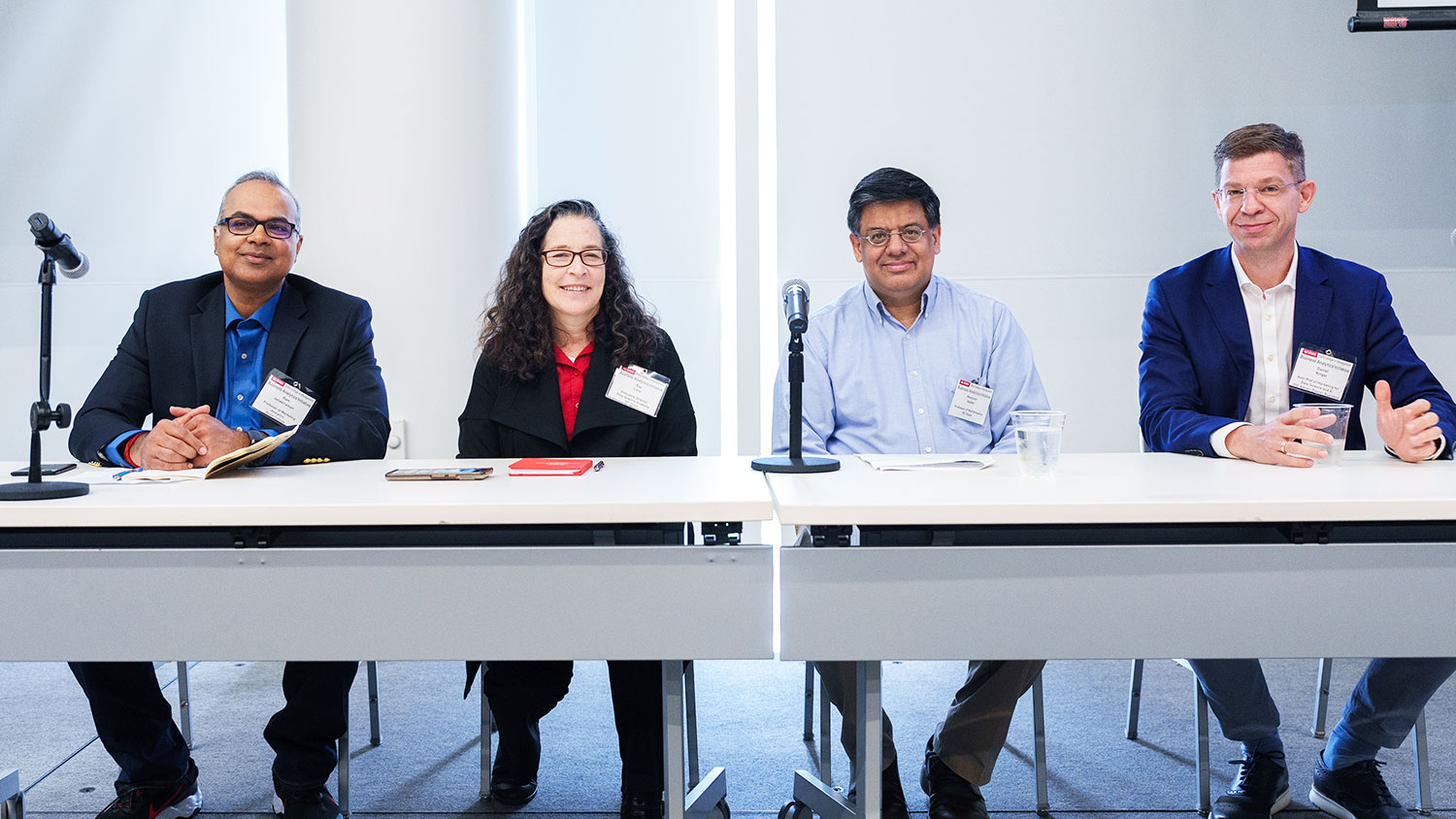By Jess Clarke
For the past two decades, the Clinton Health Access Initiative (CHAI) has worked with partner governments around the globe to strengthen health systems and save lives. Central to this mission is a core set of values that include working with urgency, remaining entrepreneurial and driving cooperation.
The COVID-19 pandemic presented yet another opportunity to put those values into action. CHAI worked with partner countries and the global health community to quickly understand the resources needed to respond and enable health systems to adapt.
The key to this initiative? Data analytics.
CHAI Senior Director of Global Health Sciences Paul Domanico went to the best big-data resource he knew: the Business Analytics and AI Initiative (BAI) at NC State’s Poole College of Management.
“We knew there were various things we would do to help with the international response,” Domanico says.
That meant finding the most reliable information about COVID, including therapies, diagnostics, symptoms, variants and the disease’s epidemiology. “If you want to look at thousands and thousands of journal articles and there’s only six of you, and this isn’t your job, what tool can you use?” Domanico says.
The BAI was on it — and developed a system that will help strengthen health care delivery worldwide.
Rakesh Ravi, BAI chief data scientist, used artificial intelligence (AI) to build a tool for CHAI that gathers and organizes data from thousands of scientific publications and news articles, which the nonprofit can access through a user-friendly web interface. Dashboards in a portal allow CHAI users to search for, view and save content; engage in interactive discussions; and create newsletters and reports, among other features.
By giving CHAI the ability to analyze multiple data sources on the same platform and share content, “It makes data processing much easier and also is a great collaboration tool,” says Ravi, a Poole research assistant professor. Unlike Google, “It’s customized to CHAI and adds only information that’s relevant.”
Even just the relevant information is a massive amount of data. The tool gathers about 10,000 articles from scientific publications and 7,000 news articles every two weeks for CHAI, a nongovernmental organization with offices in 40 countries.
This informs our clinicians about the current understanding of how to care for COVID patients, what the epidemiology looks like…medical trends and therapies.
“We are building what we believe is impactful and distinct,” Domanico says. “This informs our clinicians about the current understanding of how to care for COVID patients, what the epidemiology looks like…medical trends and therapies,” and other virus aspects. “This is what we need to counsel groups in sub-Saharan Africa, India and Southeast Asia.”
CHAI also uses the tool to learn about COVID drugs in drug discovery or early in clinical development. “It gives us an early-notice capability…that makes us smarter and more aware and keeps us current,” says Domanico, whose office is in Durham.
As CHAI staff members study the data to assess how it should influence care, they can use the tool both retrospectively and predictively, reviewing past COVID-19 missteps and working to reduce or eliminate them going forward.
The tool also can process information from social media. CHAI has analyzed tweets in three African countries to find clinics that may need medical supplies and monitor workers’ mental health.
In a previous project with the American Coatings Association (ACA), Ravi developed a similar system to determine if chemicals used by ACA-affiliated companies were harmful to humans or the environment. “Once we developed that, we had a skeleton in place to apply this tool more broadly,” he says.
The tool’s versatility gives it value for any sector.
The back end is really flexible and is designed for any industry project that involves processing of structured data like sales figures or unstructured data like news articles and tweets.
Ravi can tweak the dashboards to work with different data. “The back end is really flexible and is designed for any industry project that involves processing of structured data like sales figures or unstructured data like news articles and tweets,” he says. “We’re always looking to add more AI capability.”
CHAI, too, will develop the tool’s capability for its objectives. That means eventually using the system to support advances in tuberculosis and antimicrobial drug resistance. “Now that we have so much in place, it will be relatively easy,” Domanico says. “This will help our scientists provide the best advice to all of our internal and external partners.”
CHAI staff will use the articles in the portal for a monthly CHAI-centric newsletter on COVID trends and hotspots. Eventually, the organization hopes to share the newsletter with other groups, such as the medical centers at Duke and Wake Forest universities and the University of North Carolina.
“What we’ll disseminate is exquisitely filtered by NC State’s tool, and that information will be pulled together by CHAI’s experts to distribute,” Domanico says.
The BAI tool could influence health care decisions with existing and future diseases in many countries.
For CHAI and its partners, “It’ll be the go-to source for a sound assessment of breaking news in global health,” Domanico says. “It will give us a better idea of new approaches to diagnostics and a clear understanding of all drug development portfolios and best practices in the clinical care of new diseases.”
- Categories:
- Series:



